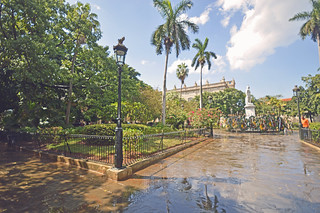Palacio de los Capitanes Generals
The Palacio de los Capitanes Generales is the former official residence of the governors (Captains General) of Havana, Cuba. Located on the eastern side of the Plaza de Armas in Old Havana it is home to the Museum of the City of Havana (Museo de la Ciudad). It houses exhibitions of art and historical artefacts and many of the rooms are preserved with their original Colonial decoration.
The last of the Colonial governors vacated the palace in 1898 when Cuba gained independence under the terms of the Treaty of Paris, and it was used by the US military governors from 1899 until 1902. It was used as the presidential palace of the Cuban Republic from 1902 until 1920, when the president relocated to the building which now houses the Museum of the Revolution and the Palacio de los Capitanes Generales became once again the offices of the city council. The municipal authorities moved elsewhere in 1967 and in 1968 the palace became the City Museum.
en.wikipedia.org








